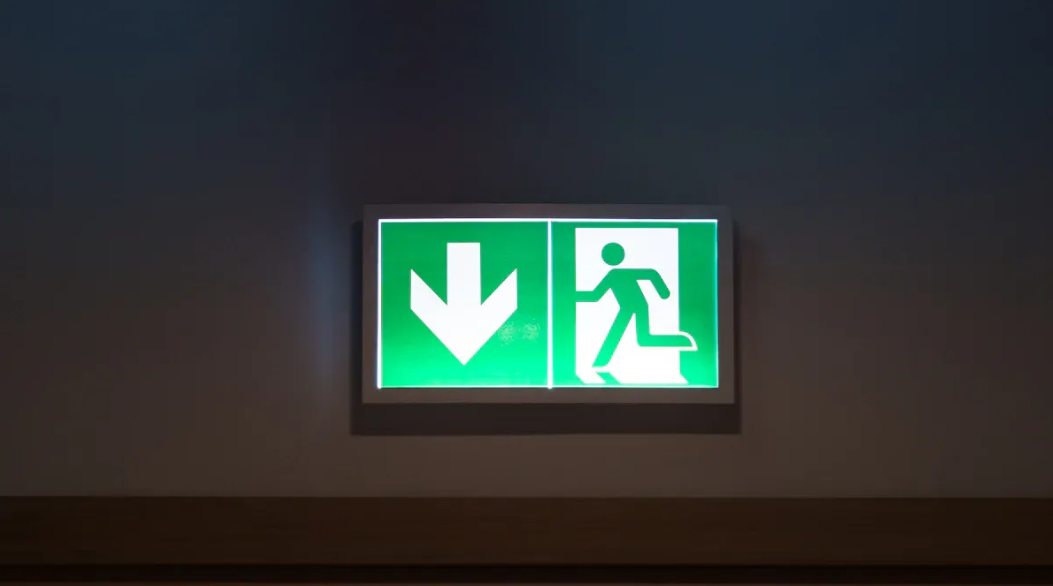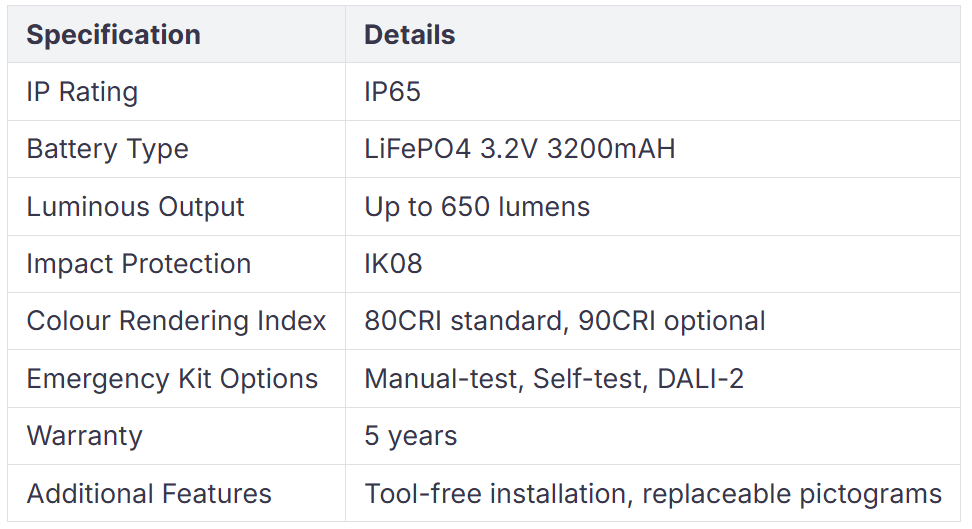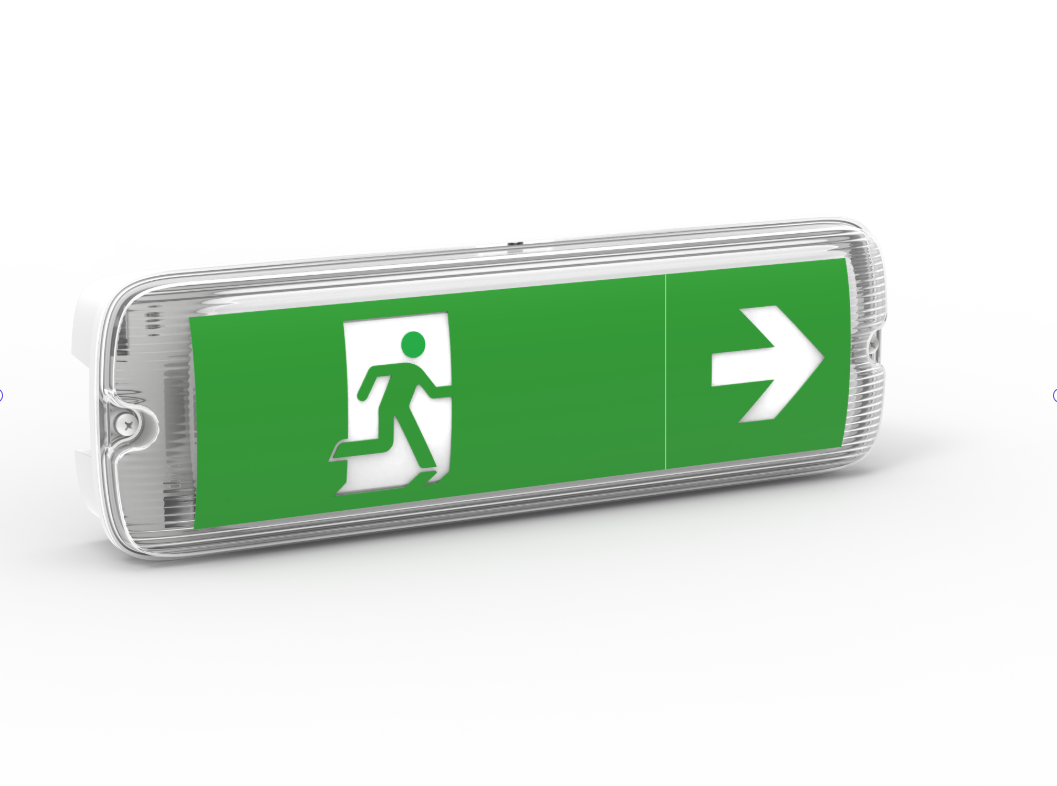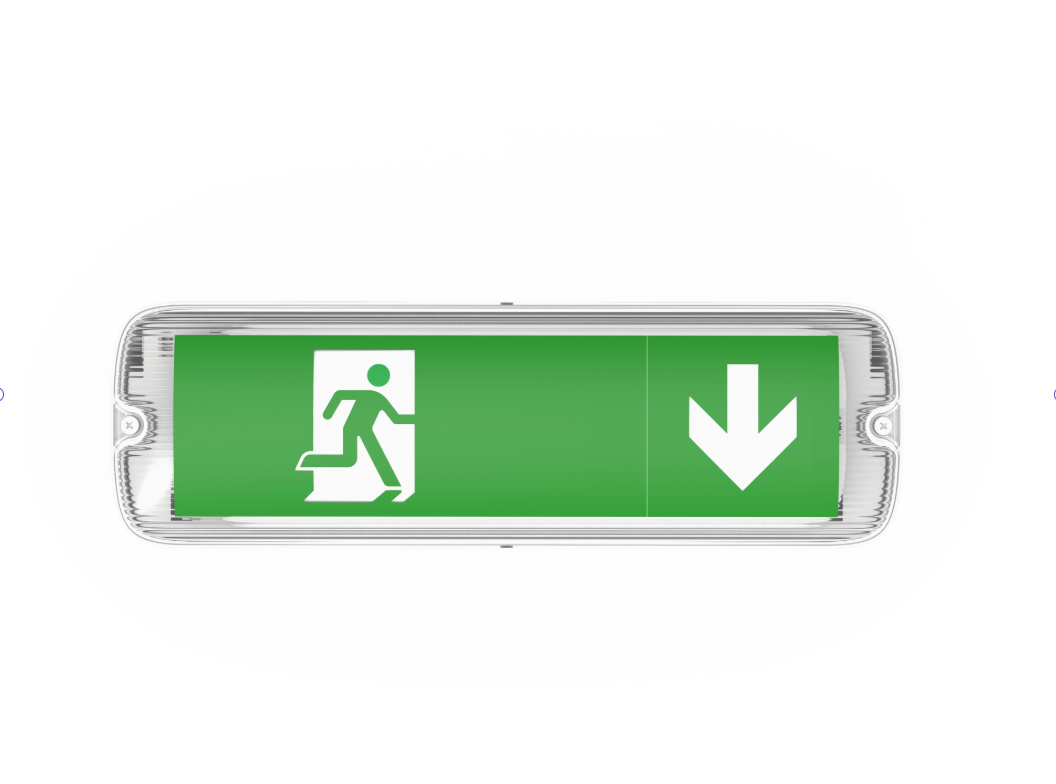
- English
- Español
- Português
- русский
- Français
- 日本語
- Deutsch
- tiếng Việt
- Italiano
- Nederlands
- ภาษาไทย
- Polski
- 한국어
- Svenska
- magyar
- Malay
- বাংলা ভাষার
- Dansk
- Suomi
- हिन्दी
- Pilipino
- Türkçe
- Gaeilge
- العربية
- Indonesia
- Norsk
- تمل
- český
- ελληνικά
- український
- Javanese
- فارسی
- தமிழ்
- తెలుగు
- नेपाली
- Burmese
- български
- ລາວ
- Latine
- Қазақша
- Euskal
- Azərbaycan
- Slovenský jazyk
- Македонски
- Lietuvos
- Eesti Keel
- Română
- Slovenski
- मराठी
- Srpski језик
Exploring the Uses of Emergency Bulkhead Lights in Modern Buildings
2025-07-14
An emergency bulkhead light helps people see in an emergency. Buildings use emergency lighting when the power goes out. Emergency lights turn on fast so people can move safely. Good emergency lighting keeps people safe in modern buildings.
Key Takeaways
- Emergency bulkhead lights give bright and steady light when power goes out. They help people see exits fast and keep safe. - LED emergency bulkhead lights use less energy and last longer. They also follow strict safety rules. This makes them good for modern buildings. - Checking and fixing emergency lighting often makes sure they work well. It also helps them follow UK safety laws.
Emergency Bulkhead Light Overview

Definition and Purpose
An emergency bulkhead light is a special emergency light. It helps people see and move if the main power stops working. These lights are very important for building safety. They shine brightly during emergencies like fires or blackouts. Emergency bulkhead lights show people where to go to escape. They help everyone find exits fast and stop panic.
Emergency lighting systems are needed in public and commercial buildings. They turn on by themselves when the power goes out. This helps people see and move safely to exits. These systems also help buildings follow safety rules and emergency lighting laws.
Some main safety jobs of emergency bulkhead lights are:
- Giving light so people can escape safely if power fails.
- Helping people find exits and stay away from danger.
- Stopping confusion and panic when there is an emergency.
- Working with emergency signs to show the best way out.
- Making sure the building follows fire and safety laws.
Fanxstar’s Industrial Self-contained LED Emergency Bulkhead is a good example of a modern emergency light. This emergency fitting uses new LED technology for bright, steady light. It has a strong body with an IP65 rating, so it keeps out dust and water. The built-in LiFePO4 battery lets the light work for a long time in emergencies. Fanxstar’s emergency bulkhead light meets strict safety rules, so many buildings trust it.
Types and Modes
Emergency bulkhead lights come in different types and modes for different needs. The main types are:
-
Non-maintained emergency lights: These lights stay off until the power fails. They save energy and last longer because they are not always on. Many stairways and halls use non-maintained emergency lights.
- Maintained emergency lights: These lights can stay on all the time or be switched on when needed. They are good for places like cinemas or theatres where lights must always be on, even if the power goes out.
- Combined or sustained emergency luminaires: These have more than one lamp. One lamp works with normal power, and the other turns on in an emergency.
There are also different styles of bulkhead emergency fittings:
- Internal and external bulkhead lights, often made with strong plastic bodies.
- LED bulkhead lights, which use less energy and last longer than normal ones.
- Eyelid bulkhead lights, which have a curved cover to shine light down, making them good for low spaces.
LED emergency lighting has many good points:
- Uses less power and saves money on bills.
- Lasts much longer than old-style lights.
- Gives instant, bright light in emergencies.
- Works well in tough places because it is waterproof.
The table below shows some usual technical features of top emergency bulkhead lights like Fanxstar’s model:

LED emergency lighting is now the top choice for many buildings. It uses less energy, lasts longer, and gives reliable light when needed. Fanxstar’s emergency bulkhead light is easy to install and keeps people safe, so it fits many places.
Emergency Lighting Applications

Typical Locations
Emergency lighting is very important in many parts of a building. UK fire safety rules say emergency bulkhead lights must go in key places. These places help people leave safely in an emergency. Some common places are:
- Corridors and escape routes
- Stairwells and landings
- Toilets and washrooms
- Open spaces used to stop panic
- Car parks and shared areas
- Near fire exit signs and emergency exits
These spots need enough light if there is an emergency. Emergency escape lighting helps people see and move if the power goes out. Emergency lights and fire exit signs work together to show the way out. The lighting system must give at least 1 lux of light on escape routes. This meets strict safety rules.
Importance in Emergencies
Emergency escape lighting helps people find the way out if the power fails, there is a fire, or another emergency happens. The lighting system gives bright light so everyone can see escape routes and stay safe. Escape route lighting is extra important for children or people who cannot move easily. Emergency escape lighting uses strong bulkhead emergency fittings that work in tough places.
Fanxstar’s emergency lighting products meet high safety standards like TUV CB, CE, and RoHS. These lights use LED technology and have battery backup to keep working in emergencies. The emergency escape lighting system lights up corridors, stairwells, and exits. Escape route lighting and emergency lights help stop confusion and panic. They make sure everyone can leave the building quickly and safely.
Emergency Lights: Regulations and Practicalities UK Standards
Emergency escape lighting in the UK must follow strict rules. These rules help keep people safe in buildings. There are several standards for emergency lighting systems. These standards guide how to design, test, and look after the lights. Some important standards are:
- BS 5266-1: This standard tells how to design and test emergency escape lighting. It says how bright the lights should be and how long they must work.
- BS EN 60598-1: This rule explains what emergency lights and fittings must have.
- BS EN 62034: This standard is about automatic test systems for battery-powered emergency escape lighting.
- BS EN 1838: This rule says how bright emergency escape lighting must be and how long it should last.
- The Regulatory Reform (Fire Safety) Order 2005: This law says emergency escape lighting is needed in non-domestic buildings.
These standards make sure emergency escape lighting works well and keeps people safe during emergencies.
Installation and Maintenance
Good installation and regular checks keep emergency escape lighting working well. Many old bulkhead emergency fittings have problems like heavy batteries or broken lamps. Modern LED emergency lighting, such as Fanxstar’s bulkhead, fixes many of these issues. Fanxstar’s emergency lighting is easy to set up and has replaceable pictograms, so installation is quick.
Regular testing is very important. UK rules say you must do a flick test every month and a full test every year for each emergency escape lighting system. Staff should write down all tests in a logbook. Batteries in emergency lights usually last two to five years, so checking and changing them is important.
To save energy, building managers should clean the lights, check batteries, and use LED technology. These steps help the emergency lighting system stay bright and ready for emergencies. Good care also helps meet emergency lighting rules and safety needs.
Emergency bulkhead emergency fittings are very important for building safety. When you pick emergency lighting, look for adjustable power and battery backup. Make sure the lights are strong and last a long time. Test and check the lights often to meet safety rules. Following emergency lighting laws is important. Choose certified LED emergency lighting like Fanxstar for safe escape routes and clear fire exit signs.
FAQ
What is the difference between maintained emergency lights and non-maintained emergency lights?
Maintained emergency lights are always on, even if there is no emergency. Non-maintained emergency lights only switch on when the main power stops working. Both types help buildings follow safety rules.
Where should bulkhead emergency fittings be installed for maximum safety?
Put bulkhead emergency fittings along escape routes and near fire exit signs. Place them at every exit too. This helps people see the way out and follows emergency lighting rules.
Why are LED emergency lighting products recommended for modern buildings?
LED emergency lighting products use less energy and last much longer. They give bright light when there is an emergency. These products help buildings follow safety rules and emergency lighting laws.




